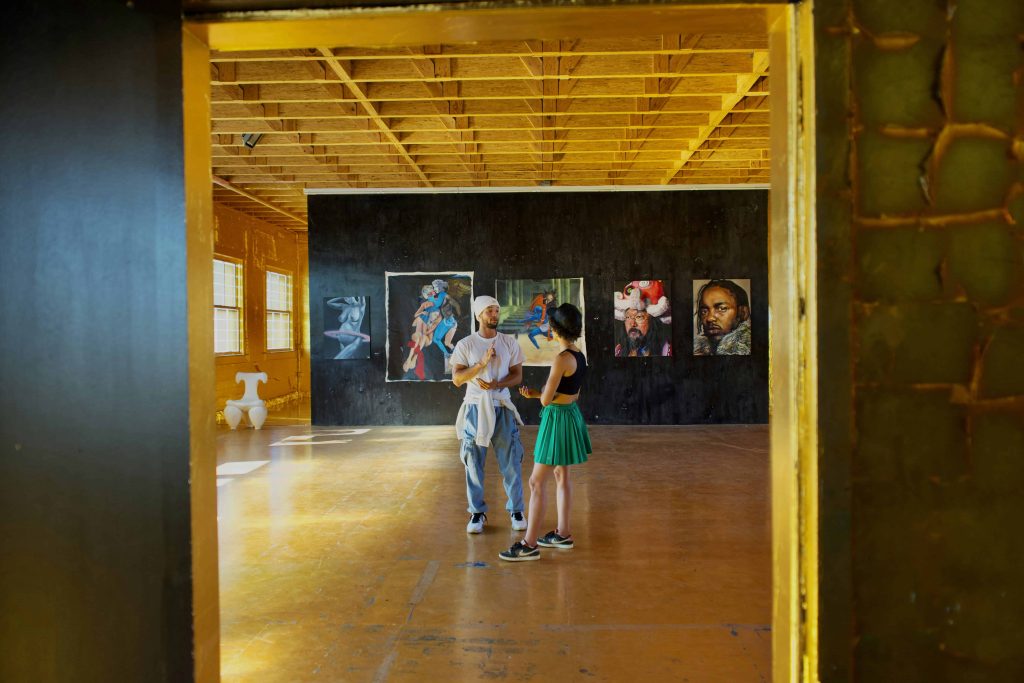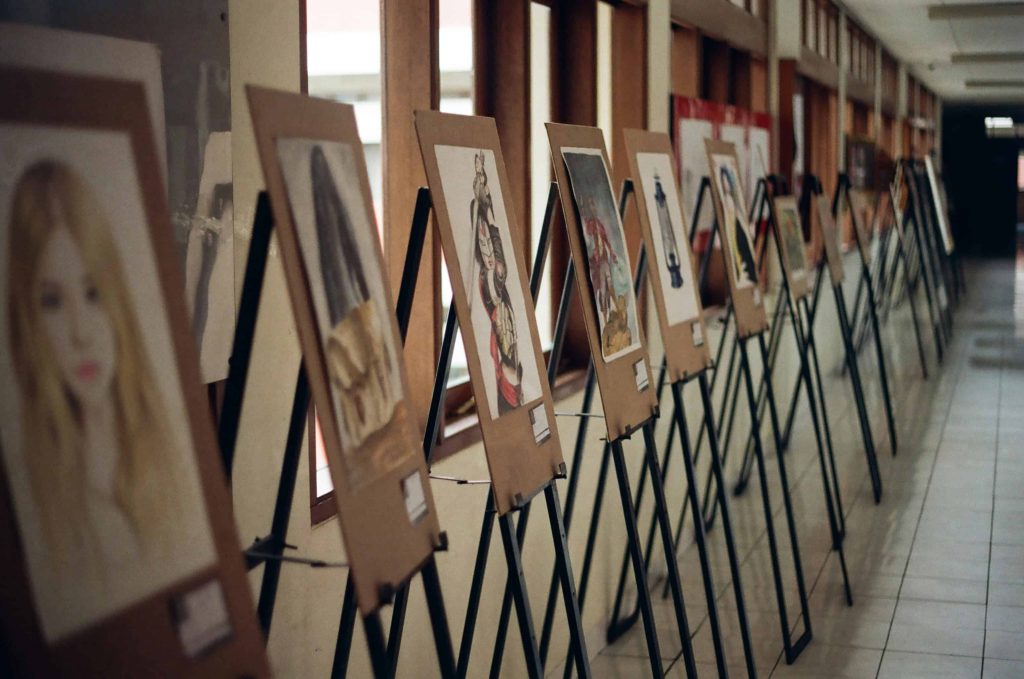
04 Nov How Art Exhibitions Foster Educational Outreach in 2024
Fostering Educational Outreach through Exhibitions
Art exhibitions serve as powerful platforms for educational outreach, offering audiences unique opportunities to engage with diverse perspectives, stimulate critical thinking, and foster cultural understanding. By curating accessible and thought-provoking exhibits, institutions can create inclusive learning environments that resonate with communities of all backgrounds. This article will explore the transformative potential of art exhibitions in education, effective outreach strategies, and the challenges and opportunities inherent in creating meaningful learning experiences.
The Power of Art Exhibitions in Educational Outreach
Art exhibitions have the capacity to inspire and educate by making art accessible to a broad audience. With intentional curation and design, these exhibitions can foster engagement across age groups, promote critical thinking, and encourage cultural exchange.
Engaging Diverse Audiences
An effective art exhibition reaches people from various backgrounds and levels of knowledge, offering experiences that are both inclusive and accessible. Tailoring exhibitions to engage different audiences can be achieved through:
- Accessibility and Inclusivity: Designing exhibitions that consider different physical abilities, languages, and sensory needs can make a space welcoming to all. Audio descriptions, braille, multi-lingual labels, and interactive features enhance inclusivity.
- Targeting Diverse Interests: From interactive installations to family-friendly exhibits, curating with a range of interests in mind ensures that all audience members can find value in the experience. For example, youth-oriented exhibits with hands-on elements or activities designed for various age groups expand appeal.
Stimulating Critical Thinking
Art exhibitions can encourage viewers to think critically about what they see, providing an avenue for intellectual exploration. Strategies to achieve this include:
- Curatorial Choices and Interpretive Materials: Thoughtfully selected artworks, combined with educational texts and multimedia, can guide visitors in their interpretations. Including information about historical, social, or political contexts helps viewers engage in deeper reflection.
- Encouraging Dialogue and Discussion: Facilitated spaces within exhibitions, like discussion zones, enable visitors to share interpretations and ideas, creating an interactive learning environment that extends beyond passive observation.
Fostering Cultural Understanding
Exhibitions offer a unique lens through which to view different cultures, histories, and perspectives, promoting empathy and global awareness.
- Showcasing Diverse Perspectives: Exhibits featuring a variety of artists from different cultural backgrounds help audiences connect with global narratives, fostering understanding across divides.
- Promoting Intercultural Exchange: Cross-cultural exhibitions that celebrate artistic traditions from around the world can break down cultural barriers and encourage open-mindedness among visitors.
Strategies for Effective Educational Outreach in Art Exhibitions
Successful educational outreach requires thoughtful planning and design that enhances learning outcomes and strengthens community connections. Below are key strategies for implementing effective outreach initiatives.
Pre-Exhibition Planning
Before launching an exhibition, careful planning can help identify goals, target audiences, and partnership opportunities:
- Identifying Target Audiences: Knowing the demographics and interests of potential visitors helps in shaping content that resonates with specific groups, such as students, families, or professionals.
- Collaborating with Educators and Community Partners: Involving local schools, universities, or community organizations in planning can bring added expertise and align the exhibit with broader educational goals.
Exhibition Design and Curation
The design of an exhibition can significantly impact its educational effectiveness. Key elements to consider include:
- Interactive and Immersive Experiences: Incorporating tactile exhibits, virtual reality, or digital interactions can enhance visitor engagement and make learning more dynamic.
- Educational Integration: Incorporating educational components, like thematic guides, self-guided tours, and informative panels, allows visitors to engage at different learning levels, deepening their understanding of the exhibit.
Public Programs and Events
Accompanying public events can extend the impact of exhibitions, offering additional educational opportunities and fostering a sense of community:
- Guided Tours and Workshops: Tours led by knowledgeable guides or artist-led workshops allow for direct engagement with art, fostering a deeper appreciation for the works on display.
- Lectures and Panel Discussions: Inviting experts to discuss themes related to the exhibition allows audiences to explore the subject matter further, enriching their understanding through academic and professional insights.
- Family-Friendly Activities: Programs geared toward young children and families can create a welcoming environment, encouraging learning through activities like storytelling sessions or art-making stations.
Post-Exhibition Engagement
The learning doesn’t have to end when the exhibition closes. Continued engagement can keep visitors connected and encourage further exploration:
- Evaluating Impact: Collecting visitor feedback and assessing the exhibition’s reach can provide valuable insights for future improvements.
- Developing Online Resources: Offering digital archives, downloadable guides, or online exhibitions can ensure the exhibition’s accessibility beyond physical boundaries, especially useful for remote audiences and educators.
Challenges and Opportunities in Educational Outreach through Art Exhibitions
While art exhibitions hold significant educational potential, they also come with unique challenges. Addressing these challenges thoughtfully can turn them into opportunities for growth and innovation.
Funding and Resource Constraints
Educational programming requires adequate funding to ensure high-quality experiences, yet many institutions face financial limitations.
- Securing Funding: Grants, sponsorships, and donations are essential for sustaining educational programs, enabling institutions to develop comprehensive exhibitions that engage diverse audiences.
- Leveraging Technology and Digital Platforms: Technology offers a cost-effective way to enhance accessibility. Virtual tours, interactive apps, and augmented reality can enrich the visitor experience and reduce resource strain.
Measuring Impact
Measuring an exhibition’s educational impact is essential to understanding its effectiveness and making data-informed decisions for future projects.
- Evaluation Methods: Surveys, feedback forms, and visitor interviews can provide qualitative insights into the exhibition’s success.
- Tracking Long-Term Outcomes: For outreach programs targeting younger audiences or students, tracking outcomes over time, such as educational attainment or sustained interest in art, can demonstrate the long-term benefits of exhibitions.
Conclusion
Art exhibitions are more than just spaces for showcasing art—they are powerful tools for educational outreach, capable of fostering community engagement, inspiring critical thought, and bridging cultural divides. By designing inclusive, interactive, and educational experiences, institutions can create lasting impacts on diverse audiences, making art a vital part of the learning landscape. Institutions and organizations are encouraged to embrace exhibitions as a means of educational outreach, leveraging their transformative potential to connect with communities and inspire future generations.
Key Takeaways
- Educational Potential: Art exhibitions create accessible spaces for diverse audiences, promoting critical thinking and cultural understanding.
- Audience Engagement: Exhibitions that prioritize inclusivity—such as multilingual and sensory-friendly features—appeal to various demographics and interests.
- Stimulating Dialogue: Curatorial choices and interactive elements encourage viewers to reflect and discuss, enhancing learning and intellectual engagement.
- Cultural Exchange: Exhibitions with global themes foster empathy and bridge cultural divides.
- Effective Outreach Strategies: Targeted pre-planning, interactive designs, and public events deepen engagement and community connection.
- Overcoming Challenges: Funding and impact measurement are key hurdles; partnerships and digital resources help extend educational impact.
- Conclusion: Art exhibitions can be powerful tools for outreach, connecting communities and fostering meaningful learning experiences.
FAQs
How do art exhibitions serve as educational outreach tools?
Art exhibitions engage diverse audiences by presenting thought-provoking works, enabling visitors to explore cultural perspectives, historical contexts, and social issues. Through interactive design, guided tours, and workshops, exhibitions create accessible, stimulating learning environments that inspire reflection, critical thinking, and dialogue.
What strategies can make art exhibitions more inclusive and accessible?
Effective exhibitions incorporate accessibility features like multilingual labels, braille, and sensory-friendly options. By designing diverse experiences—such as hands-on activities and interactive installations—curators ensure people of all backgrounds, ages, and abilities can enjoy meaningful engagement with the artwork.
What challenges do institutions face in using exhibitions for educational outreach?
Institutions often struggle with funding and resource limitations, which can hinder the quality of educational programming. However, innovative solutions like virtual tours, online resources, and community partnerships help enhance outreach, making educational experiences more widely available and impactful.
From virtual galleries to fully immersive, interactive installations, this article reveals how digital artists are using technology to push creative boundaries, creating artworks that engage audiences like never before.




